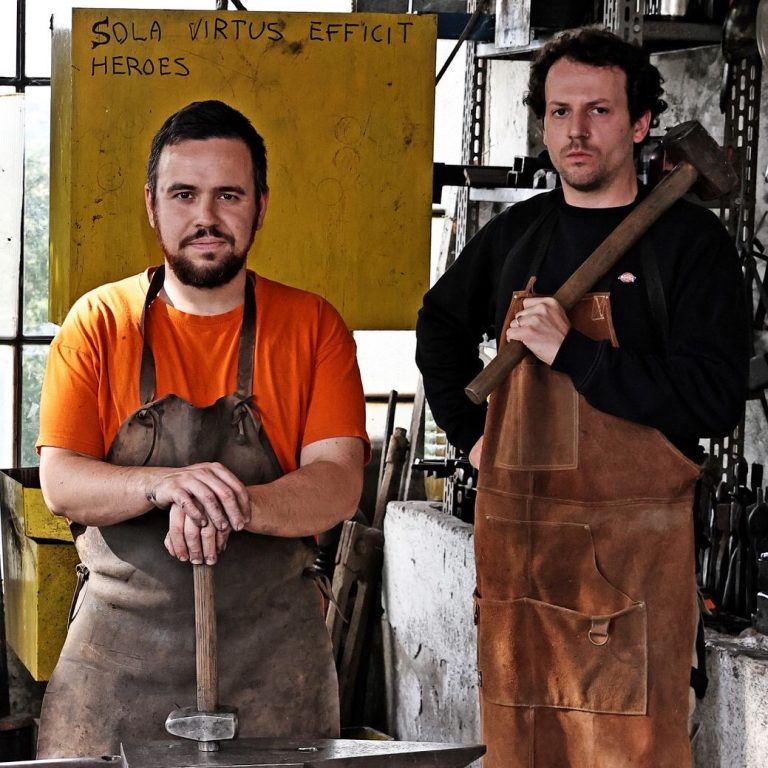About

Fusina Feraro was born from the collaboration between Giovanni Sartori and Luca Munaretto. Both are meticulous researchers of the Italian metallurgical tradition, with a particular focus on the iron and steel technologies developed between the Middle Ages and the early Modern Age. Their backgrounds have contributed in a unique way to give value and authenticity to the project. Giovanni graduated in Chemistry for Restoration and spent several years ironworking as a blacksmith, gaining a deep understanding of techniques and refining his manual skills. Luca, graduated in History, his contribution is central in structuring the study of historical sources and he oversees the communication and dissemination. Although they come from different backgrounds, their mutual understanding ensures that all phases of the project are supervised and curated by both.
Their common aim to put traditional techniques into practice starts from the desire of manufacturing unique individual elements that compose the final work, from the processing and production of the raw material to the finished piece. Such elements tell the story of the object and are imbued with a particular meaning which constitutes the rich and complex identity of the final product. Fusina Ferraro wants to employ a bottom-up approach to interpret and understand the artefact in its many facets, obtaining an overall picture of the object that includes multiple values. In Fusina Ferraro, history, science, culture, technique and research are therefore inextricably united, not only as means for the creation of the objects, but also as theoretical stands to add intrinsic value to the artefacts.
The processes of transformation, from the raw material to the finished object are reconstructed as well as the History, including archival research and the study of primary sources. The ultimate goals are the pursuit of authenticity through experimentation and the philological reconstruction of historical techniques used in the past. This allows not only to know processes and materials used, but also to understand the context, events, customs, and people connected to the making of the object.
It is then possible to appreciate the work in all its aspects and achieve a high-quality finished result. The products manufactured after this deep research acquire a value that goes beyond materiality, such value is one of the many aspects that contribute to the authenticity and the respect an artefact needs.
The ideals that guide and distinguish us are the attention to historical fidelity and the deep respect for the manufacturing process at every stage. From this awareness comes a commitment to constant historical, artistic, and scientific research. We try to relate to the ancient craftsmen, a fundamental step that helps us understanding which is the best method or technique to achieve a given goal with the means available in their time, this method really complements our research.
Our work is more than just the material deployment of resources; it is an interpretive process that takes the form of the utmost care and attention to detail.
It is a time-consuming work, but it gives meaning to time and brings History back to life.